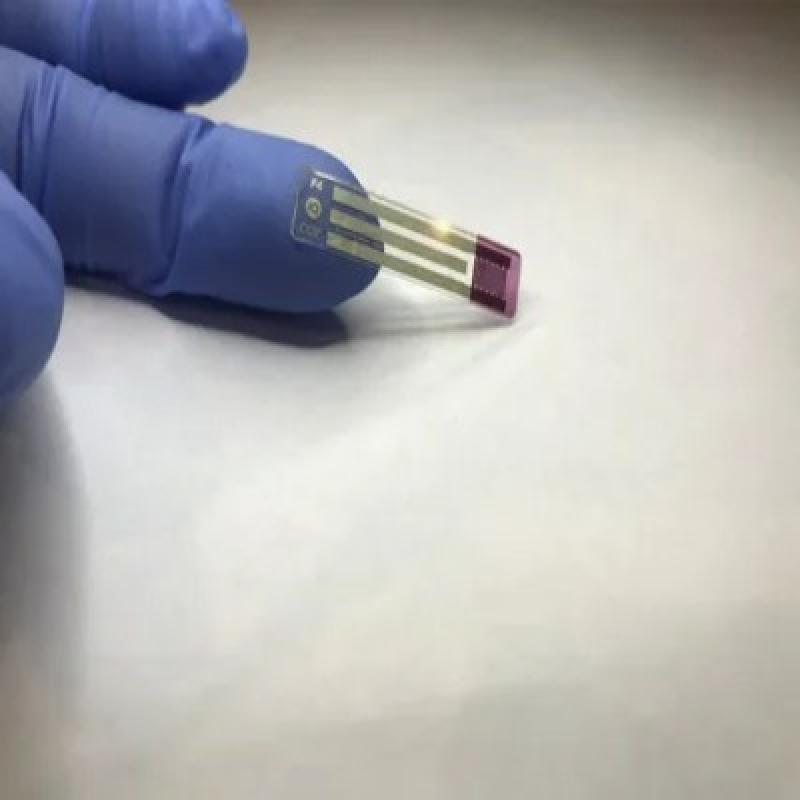The Rise of Non-Invasive Biosensors: Revolutionizing Patient Monitoring and Diagnosis
Non-invasive biosensors have emerged as a game-changer in the healthcare industry, offering a painless and convenient way to monitor various physiological parameters. These innovative devices have the potential to revolutionize patient care by enabling continuous, real-time monitoring without the need for invasive procedures. From wearable devices that track vital signs to advanced sensors that detect specific biomarkers, non-invasive biosensors are transforming the way we approach healthcare.
One of the key advantages of Non-Invasive Biosensor is their ability to provide accurate and reliable data without causing discomfort or risking infection. Traditional invasive methods, such as blood tests or biopsies, often require a sample to be taken from the body, which can be painful and carry a risk of complications. In contrast, non-invasive biosensors can measure various parameters, such as heart rate, blood oxygen levels, and glucose levels, through simple contact with the skin or other external means.
Wearable Biosensors: Empowering Patients and Enabling Remote Monitoring
Wearable biosensors have gained significant popularity in recent years, thanks to their ability to provide continuous monitoring of vital signs and other health parameters. These devices come in various forms, such as smartwatches, fitness trackers, and specialized medical-grade wearables. By integrating advanced sensors and wireless connectivity, wearable biosensors allow patients to track their health data in real-time and share it with healthcare providers remotely.
The benefits of wearable Non-Invasive Biosensor extend beyond patient convenience. They enable healthcare professionals to monitor patients' health status remotely, reducing the need for frequent hospital visits and allowing for early detection of potential health issues. This is particularly valuable for patients with chronic conditions, such as diabetes or cardiovascular diseases, who require regular monitoring and management. Wearable biosensors can alert patients and healthcare providers to abnormal readings, prompting timely interventions and preventing complications.
Non-Invasive Glucose Monitoring: A Game-Changer for Diabetes Management
Diabetes is a chronic condition that affects millions of people worldwide, requiring regular monitoring of blood glucose levels. Traditionally, this has been done through invasive methods, such as finger-prick tests, which can be painful and inconvenient. However, non-invasive glucose monitoring systems are now emerging as a promising alternative, offering a painless and more convenient way to manage diabetes.
Non-invasive glucose monitoring devices use various techniques, such as optical sensors or transdermal measurement, to measure glucose levels without the need for blood samples. These devices can provide continuous glucose monitoring, enabling patients to track their glucose levels throughout the day and make informed decisions about their diet, exercise, and medication. Some non-invasive glucose monitoring systems even integrate with smartphones or smartwatches, allowing patients to view their data and receive alerts when glucose levels are out of range.
Advancing Medical Research and Drug Development with Non-Invasive Biosensors
Non-invasive biosensors have applications beyond patient monitoring and diagnosis. They also play a crucial role in medical research and drug development. By providing real-time, continuous data on various physiological parameters, non-invasive biosensors can help researchers gain a deeper understanding of disease progression, treatment efficacy, and drug interactions.
In clinical trials, non-invasive biosensors can be used to monitor participants' responses to experimental treatments, providing valuable insights into safety and efficacy. These devices can also help identify potential side effects or adverse reactions early on, allowing for timely adjustments to the trial protocol. Furthermore, non-invasive biosensors can enable remote monitoring of trial participants, reducing the burden of frequent clinic visits and increasing patient compliance.
The Future of Non-Invasive Biosensors: Challenges and Opportunities
As non-invasive biosensors continue to evolve, they hold immense potential for transforming healthcare delivery and improving patient outcomes. However, there are still challenges to be addressed, such as ensuring the accuracy and reliability of the data collected by these devices. Researchers and manufacturers must work together to validate the performance of non-invasive biosensors and establish standards for their use in clinical settings.
Get This Report in Japanese Language: 非侵襲性バイオセンサー
Get This Report in Korean Language: 비침습적 바이오센서
Read More Articles Related to this Industry- Emerging Non-Invasive Aesthetic Procedures: The Future of Beauty Without Surgery
About Author:
Ravina Pandya, Content Writer, has a strong foothold in the market research industry. She specializes in writing well-researched articles from different industries, including food and beverages, information and technology, healthcare, chemical and materials, etc. (https://www.linkedin.com/in/ravina-pandya-1a3984191)
